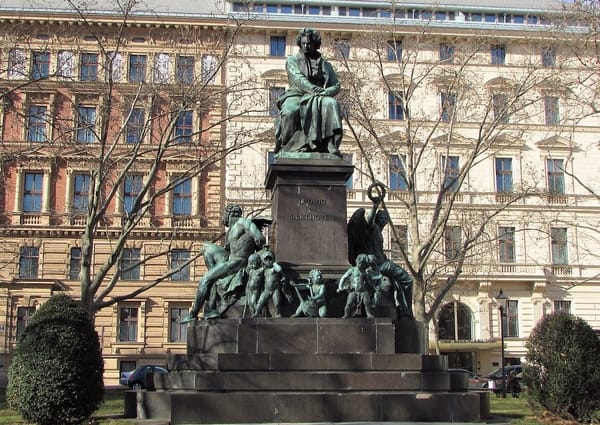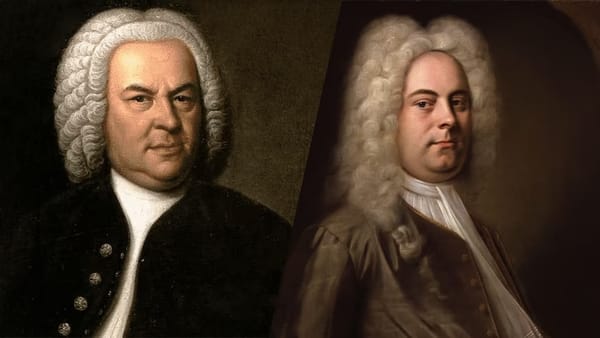Lisztomania: The Phenomenon of Franz Liszt and the Birth of Fan Frenzy
Long before Beatlemania, there was Lisztomania. Discover the hysteria surrounding Franz Liszt’s electrifying performances, the cultural impact of his virtuosity, and how the 19th-century composer ignited the first waves of fan frenzy.

In an era when classical music was considered a refined art reserved for the elite, Franz Liszt turned the concert hall into an arena of emotional tumult and adulation. The term “Lisztomania,” coined by German poet Heinrich Heine, captures the feverish enthusiasm and near-obsessive devotion Liszt inspired in his audiences. Long before rock stars packed stadiums, Liszt filled concert halls and salons with enraptured fans who screamed, wept, and scrambled for mementos.
This article delves into the cultural phenomenon of Lisztomania, exploring how the 19th-century composer and pianist became a global superstar and the societal implications of his unparalleled fame.
The Making of a Virtuoso
Born in 1811 in Hungary, Franz Liszt displayed prodigious talent from an early age. His father, an amateur musician, nurtured his gift, and by the age of nine, Liszt was performing for aristocratic audiences. His virtuosity, coupled with his ability to improvise with astonishing creativity, made him a sensation even as a child.
Liszt’s early exposure to Europe’s musical elite, including Ludwig van Beethoven and Carl Czerny, refined his artistry. But it wasn’t until his adult years that Liszt’s performances transformed into spectacles that transcended mere music.
A Visual and Musical Sensation
Liszt’s magnetism wasn’t confined to his virtuosity. His striking good looks, flowing locks, and theatrical stage presence were integral to his appeal. As he performed, he would often sweep his hair back dramatically, gaze passionately at the audience, and play with a fervour that seemed almost otherworldly.
Unlike the formal, restrained performances typical of the era, Liszt’s concerts were emotionally charged affairs. He often played from memory, a revolutionary practice at the time, allowing him to connect deeply with his audience. His improvisations, replete with dazzling technical feats, added an element of unpredictability and excitement.
The Frenzy of Lisztomania
The term “Lisztomania” wasn’t hyperbole. Accounts from the time describe scenes that resemble modern-day rock concerts: women fainting in the aisles, fans tearing at his clothes, and even collecting his discarded gloves, handkerchiefs, and broken piano strings as cherished souvenirs.
Heine famously wrote of women scrambling for locks of Liszt’s hair and even fashioning jewelry from his piano strings. Others reportedly swooned merely at the sight of him. His popularity reached such heights that it inspired merchandise, including Liszt-themed brooches and lithographs.
Lisztomania was more than just fan devotion—it was a cultural phenomenon that blurred the lines between art and celebrity.
The Cultural Impact
Liszt’s fame marked a turning point in the relationship between artists and their audiences. No longer confined to the upper echelons of society, his music reached a broader public, thanks in part to his extensive tours. Between 1839 and 1847, Liszt crisscrossed Europe, performing over 1,000 concerts.
His success coincided with the rise of the middle class, whose members were eager to participate in cultural life. Liszt’s accessibility and charisma made him a hero for this new demographic, and his concerts became social events.
Lisztomania also reflected the Romantic era’s emphasis on individual expression and the sublime. Liszt was seen as more than a musician—he was a genius, a visionary, and a symbol of human potential.
The Psychology of Fan Frenzy
What fueled the hysteria surrounding Liszt? Historians and psychologists have posited several theories. The novelty of his performances, which combined technical brilliance with emotional depth, played a significant role. Liszt’s ability to create a sense of intimacy with his audience, even in large venues, heightened his allure.
Additionally, the Romantic ideal of the tortured artist resonated with audiences. Liszt’s public persona, which combined brilliance with an air of melancholy, made him a figure of fascination.
From a modern perspective, Lisztomania can also be seen as a precursor to the celebrity culture that dominates today. Liszt cultivated his image carefully, commissioning portraits and writing extensively about his art, ensuring his legend endured.
Liszt the Innovator
Beyond his celebrity, Liszt was a transformative figure in music. He revolutionized piano technique, pushing the instrument to its limits with works that remain challenging for even the most accomplished pianists. Pieces like his Transcendental Études and Hungarian Rhapsodies showcase his technical prowess and inventive use of harmony and form.
Liszt also pioneered the solo piano recital, a format that showcased the performer as a central figure rather than part of an ensemble. His innovative approach laid the groundwork for the modern concert experience.
The Critics Weigh In
Not everyone was enamoured with Lisztomania. Critics of the time dismissed the phenomenon as superficial and unseemly. Some accused Liszt of pandering to the crowd, prioritizing showmanship over artistic integrity.
However, Liszt himself was deeply committed to his art. He balanced his flamboyant performances with serious compositional work, including symphonic poems and sacred music. His legacy as both a performer and a composer underscores the depth of his contributions to classical music.
The Legacy of Lisztomania
Lisztomania was a harbinger of the celebrity culture that defines much of modern entertainment. Liszt’s ability to captivate and mobilize audiences set the template for future generations of performers.
More importantly, Lisztomania brought classical music into the public consciousness, democratizing an art form that had previously been the domain of the elite. Liszt’s charisma and accessibility paved the way for classical musicians to engage with broader audiences.
Conclusion
Lisztomania was more than a passing fad—it was a cultural moment that reflected the changing dynamics of society, art, and audience interaction. Franz Liszt’s unparalleled charisma, technical brilliance, and innovative spirit made him a trailblazer not only in music but also in the realm of celebrity. Through his music and his persona, Liszt transformed the concert experience, leaving a legacy that continues to inspire musicians and enthral audiences. Lisztomania may have been born in the 19th century, but its echoes can be heard in every stadium, concert hall, and arena where fans gather to celebrate the power of performance.





